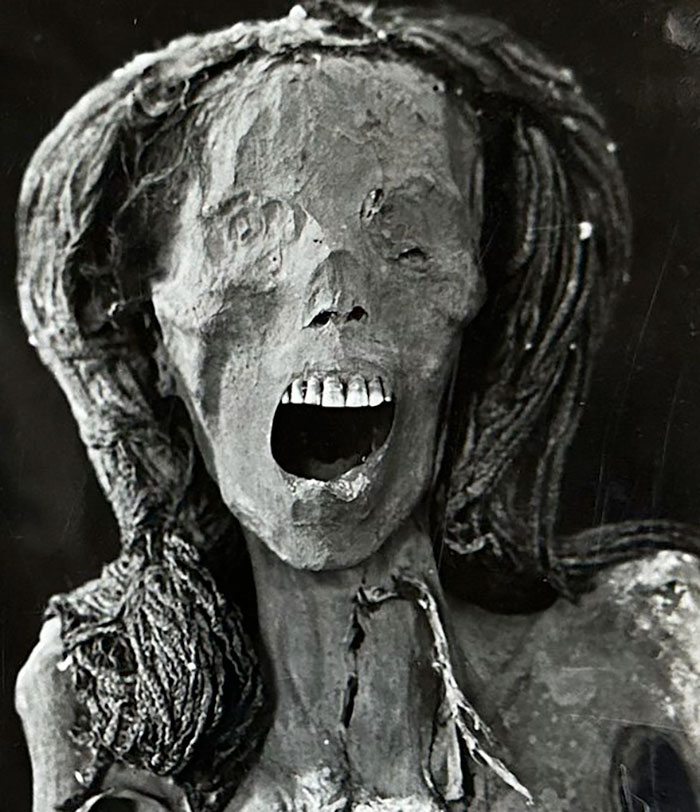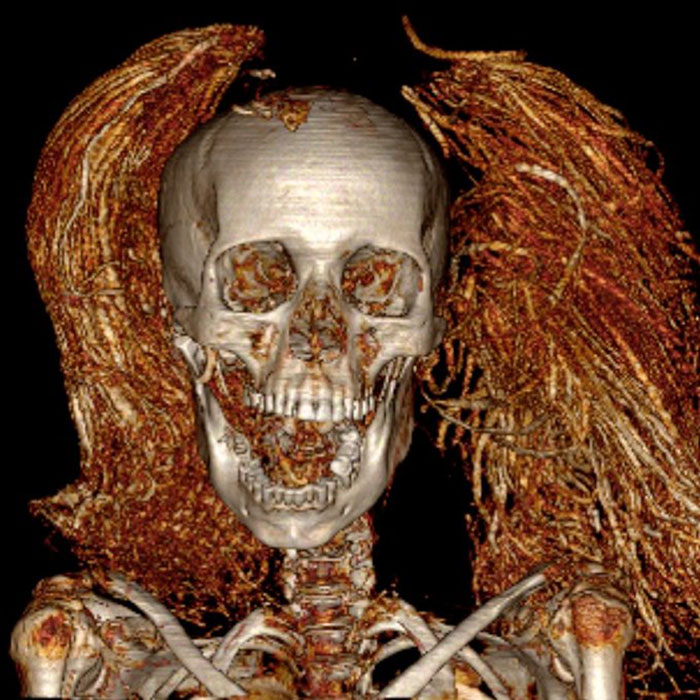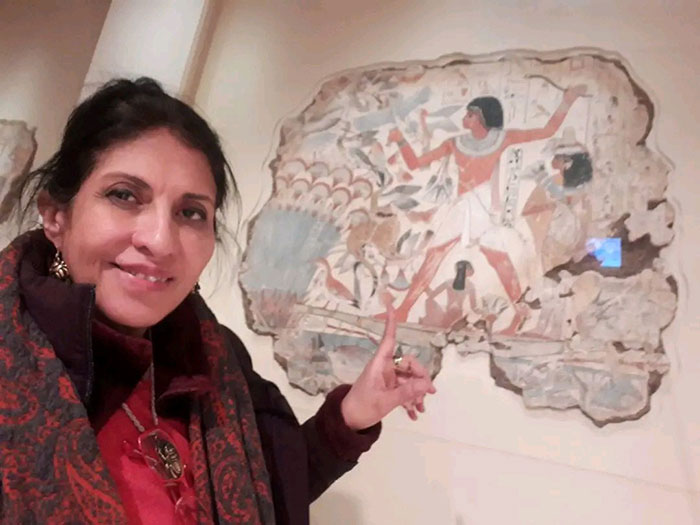A staggering image of an ancient Egyptian mummy has been gaining traction online. It shows a woman who appears to have died in extreme anguish, now frozen forever with an expression of pain and desperation fixed on her face, one that has puzzled scientists for years.
How can a mummy, a cadaver subjected to a complex and careful embalming procedure, somehow come alive and twist itself into such a horrific grimace?
Experts believe to have finally arrived at an answer after subjecting the mummy to a “virtual dissection.” Using CT scans to analyze the ingredients utilized in the ancient ritual, they were able to discredit past theories and consider an even scarier thesis:
The woman died experiencing excruciating pain.
Scientists put an end to the mystery of the “screaming mummy.” New research concludes she may have died in anguish

According to their findings, published in the journal Frontiers in Medicine, the cadaver corresponds to a 48-year-old female who had lost some teeth and suffered from a mild case of arthritis of the spine.
Previous theories surrounding the mummy believed its facial expression to have been the result of poor embalming practices. The premise stated that properly done embalming procedures in ancient Egypt often involved the removal of all internal organs save for the heart, but this had not occurred with this specific woman.
Another element believed to have been missing from her procedure was the customary tying of the head in order to avoid a postmortem jaw drop, a normal consequence of face muscles loosening after death.
“In ancient Egypt, the embalmers took care of the dead body so it would look beautiful for the afterlife. That’s why they were keen to close the mouth of the dead by tying the jaw to the head to prevent the normal postmortem jaw drop,” said Cairo University Radiology Professor Sahar Saleem.
The woman was a wealthy member of Egyptian society, having her body preserved with exquisite ingredients and decorated with expensive jewelry

The CT scan, however, allowed them to analyze the ingredients, jewelry, and other elements to determine the social status of the deceased, which were crucial to their findings.
“[The high quality of the ingredients] ruled out that the mummification process had been careless and that the embalmers had simply neglected to close her mouth. In fact, they mummified her well and gave her expensive funerary apparels – two expensive rings made of gold and silver and a long haired-wig made from fibers from the date palm,” Saleem explained.
The mummy was a high-status member of Egyptian society, having been buried in the family tomb of Senenmut, a high-ranking architect and official of Pharaoh Hatshepsut’s dynasty.
Her wig was treated with mineral quartz, magnetite, and albite. Special care was taken to ensure her natural hair remained black, which was considered an indication of youth and beauty, by dyeing it with henna and juniper oil.
Her body was decorated with gold and silver scarabs, symbols of resurrection, which were themselves decorated with jasper gemstones.
But why was she screaming? How did she die?
While the cause of death is unknown, what is now certain is that she suffered from a “cadaveric spasm,” a painful muscle contraction that precedes death and fixed her expression in place

According to Saleem, “The true history or circumstances of the death of this woman are unknown, hence the cause of her screaming facial appearance cannot be established with certainty.”
However, his findings allowed his team to consider other explanations for the mummy’s widely opened mouth.
“The woman might’ve died screaming from agony or pain,” he postulated, “with a subsequent cadaveric spasm preserving her expression at the time of death.”
According to the National Institute of Health (NIH), a cadaveric spasm is “a condition in which a group of muscles that were used profusely just before death become stiff and rigid immediately after.”
The condition is different from other types of post-mortem rigidity, as it affects only one group of muscles at a time.
While Saleem wasn’t able to determine what led to the demise of the woman, he was able to confirm that she was in agony moments before and that her expression was already fixed in place before the embalmers could get to her, the stiffness making it impossible for them to change it.
Netizens reacted with a mixture of intrigue and humor, with many reminiscing about classic Hollywood stories of cursed mummies while others shared their own explanations for the phenomenon

“I’m sure it’s safe to assume most people died in agony back then,” said one user on Reddit.
“Hollywood’s finest researchers have taught me that there’s no way this mummy is not cursed,” joked another.
“Somebody get Brendan Fraser on the phone,” one replied.
“I have seen close to 900 dead bodies at this point. Thankfully, not all deaths result in this expression. Some can die with a relatively peaceful and fresh face, if you can believe it,” shared one Redditor with ample experience handling corpses.
“That’s sad,” writes one reader as others commiserate over the last moments of the ancient mummy














